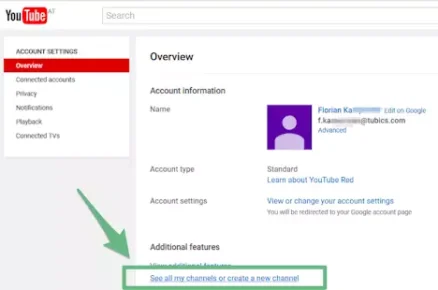What Are The Key Points Of On-Page SEO?
Search engine optimization (SEO) relies heavily on on-page optimization, which clarifies for Google the purpose of each page on your site. When Google can better interpret your content, you will rise in search results, increasing your site’s exposure and, ultimately, your income. In addition, well-implemented on-page SEO enhances the user experience.
This comprehensive on-page SEO tutorial will summarize the most vital page-specific optimization best practices you should adopt and why they are crucial to your overall SEO strategy.
Learn The Fundamentals Of Search Engines
Crawlers, also called spiders, are sent out by search engines to scour the web for relevant content. By following external connections, they may create what is known as a search index, which is essentially a map of the material available online. The crawlers’ exploration of the sites includes an assessment of the material to determine its quality.
The search engine’s algorithm uses this information to evaluate how effectively the site’s content responds to user searches. The higher the SERP appears, the better it is in answering the question. Google’s algorithm is often modified in its never-ending drive to improve search results. Consequent shifts in search engine rankings need ongoing optimization efforts.
Crucial Elements Of Search Engine Optimization
Content, HTML, and site architecture are the three main pillars of on-page SEO. We’re going to analyze each one separately.
In-Text Citation
The title tag is one of the earliest and most crucial on-page SEO factors. You should include the target keyword(s) within the page’s title. Search engines give greater weight to the title tag’s first few characters, so it is essential to include your target keyword there. Keep the title concise. The ideal number of characters for a title is between 50 and 60. If your title is any longer, it may be abbreviated in the search engine results.
Headings
You can help search engines comprehend your site’s hierarchy and focus using header tags. Headings in the content may be formatted using this. From H1 through H6, you may use one of six heading tags. In particular, the most important, H1, will be shown in the most significant font size, and the emphasis will decrease as one moves down the hierarchy to H6.
The more prominent the font size, the more crucial the information, and the keyword should be. The usage of heading tags should also be limited. All these different applications make it such that search engines cannot pinpoint the primary material.
Keywords
Repeated references in this essay to keywords should hint that they are among the most crucial elements of search engine optimization. To fully benefit from keywords, though, skillful use is essential. Be sure to include your focus keyword in the post’s introduction and the post’s body, subheadings, and picture captions. Use keywords and their variants organically to improve your search engine results without seeming spammy.
Article Writing for Search Engine Optimization
Developing content that appeals to search engines and human readers is an art form. Writing text that reads well and yet follows SEO best practices is difficult unless you have experience doing so.
While we do devote a whole article to teaching you the ropes, here are a few of the essential points to remember:
- Make sure your material is scannable so readers can quickly get the answers they need.
- Avoid keyword stuffing, which Google views as spammy and formerly employed by unethical SEO experts to manipulate search engine results. Getting found using this might lead to a drop in search engine rankings or perhaps a complete removal of your page.
- You probably know how difficult it is to read long pieces of material since, at some point, you’ve clicked on a website only to be met with a continuous wall of text. Keep your phrases and paragraphs brief to keep people engaged.
- Subheads are more significant than the surrounding text, drawing the eye of readers who are only skimming your website. Make liberal use of it to encourage people to keep scrolling through your information.
Images
Blog postings that include relevant photographs do far better on the search results than those that do not. There are several factors to think about before you start inserting photos into your material.
You should ensure that your keyword is included in the image’s filename, title, and ALT tag. In this method, your photographs will show up in relevant google images, which might lead to more traffic for your website.
As a second point, ensure that your image’s file size is suitable for online viewing; if it is too big, it will slow down your page load time, which is an essential aspect of SEO. Further, use media queries to guarantee that your photos adjust appropriately for mobile viewing.
Geotagging (For Local Search)
Even though we live in a global economy, most transactions still occur on a smaller scale. Improve your local SEO’s on-page performance to reach the people better. Large organizations like GMC and Pepsi may get by with less attention, but this is essential for small and medium-sized enterprises.
When optimizing for local traffic, there are three primary SEO Wollongong strategies to keep in mind:
Local search engine optimization includes enhancing mentions of a company’s name, address, & mobile number (NAP), website Link, and business descriptions, as well as making use of third-party applications and soliciting feedback.
By incorporating “near me” searches, delivering location-based material, or purchasing a local website, you may optimize your content for local users.
It is strengthening and improving ties to regional institutions. Please use the name of the desired place as a keyword and sprinkle it naturally throughout your material.
Reactivity On Mobile Devices
It is crucial to optimize your website for mobile devices. When developing a website, it’s essential to avoid making it seem different on different platforms since this might negatively affect your search engine rankings.
This includes both desktop and mobile devices. This implies that your mobile-friendly site will rank higher than others will when users do mobile-friendly searches.
URL Formatting
Once upon a time, URLs were a significant factor in search engine optimization. Professionals often put keywords in their domain names to improve their search engine rankings. However, Google modified its algorithm in a typical fashion. Moreover, the previously crucial factor in determining rankings now plays a considerably lower role.
That is not to suggest that it is irrelevant. Your URLs are still a factor in your site’s SEO, but they are not as crucial as they previously were. Evidence suggests they help determine an initial site rating, and some experts think they are also utilized to categorize the content. Because of this, optimizing for them will not be the top SEO priority, but you also do not want to disregard them entirely.
Conclusion
Search engine optimization (SEO) provides users with relevant information and moves your website to the top of search engine results pages (SERPs). You want to improve consumers’ experiences while also attracting the attention of search engines. Fortunately, they complement each other well. Moreover, the process begins with enhancing the page itself.
Please focus on the things you have power over first, including a thorough analysis of your present site to identify its flaws and potential for improvement. If you take care of business on the premises, you will see progress, and the off-premises variables will improve independently.
Read Also:-Small Business Digital Marketing











